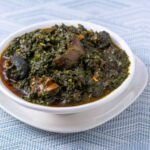When it comes to food safety, preventing biological hazards is crucial to protect consumers from illnesses caused by harmful microorganisms. By implementing certain food safety practices, businesses and individuals can significantly reduce the risk of biological contamination in food products.
1. Maintaining Cleanliness in Food Handling
One of the fundamental practices to prevent biological hazards in food is to ensure cleanliness in all food handling areas or methods.

simple steps for maintaining cleanliness in food handling areas:
- Wash hands: Thoroughly washing hands with soap and warm water is the single most crucial step to prevent contamination. It prevents the transfer of harmful bacteria and viruses to food.
- Clean surfaces and utensils: Regularly clean and sanitize food preparation surfaces, cutting boards, knives, and utensils to eliminate any lingering pathogens that could contaminate food.
- Store food properly: Properly storing food, especially raw meat and poultry, at the correct temperatures prevents the growth of harmful bacteria and ensures food safety.
These steps form the foundation of a clean and safe food handling environment.
2. Temperature Control
Proper temperature control is essential in preventing the growth of bacteria and other pathogens in food. Refrigeration of perishable items at or below 40°F (4°C) and cooking foods to their required internal temperatures can inhibit the proliferation of harmful microorganisms, thus minimizing the risk of foodborne illnesses.

3. Avoiding Cross-Contamination
Cross-contamination occurs when harmful microorganisms are transferred from one food item to another, leading to potential biological hazards.

- Use separate cutting boards: Have different cutting boards for raw meat, poultry, and vegetables to prevent pathogens from spreading.
- Wash hands: Always wash hands with soap and water after handling raw meat or poultry before touching other foods.
- Keep raw foods separate: Store raw meat, poultry, and seafood away from ready-to-eat foods in the fridge to prevent drips or spills.
- Use separate utensils: Use different utensils for handling raw and cooked foods to avoid contamination.
4. Implementing Food Safety Training
Education and training on food safety practices are vital for all individuals involved in food handling and preparation. Proper training can ensure that everyone understands the importance of preventing biological hazards and follows the necessary protocols to maintain a safe food environment.

Conclusion
In conclusion, adopting these food safety practices can significantly prevent the risk of biological hazards in food. By prioritizing cleanliness, implementing proper handwashing techniques, maintaining temperature control, preventing cross-contamination, and providing adequate training, businesses and individuals can uphold high standards of food safety and protect consumers from potential health risks associated with biological contamination.







